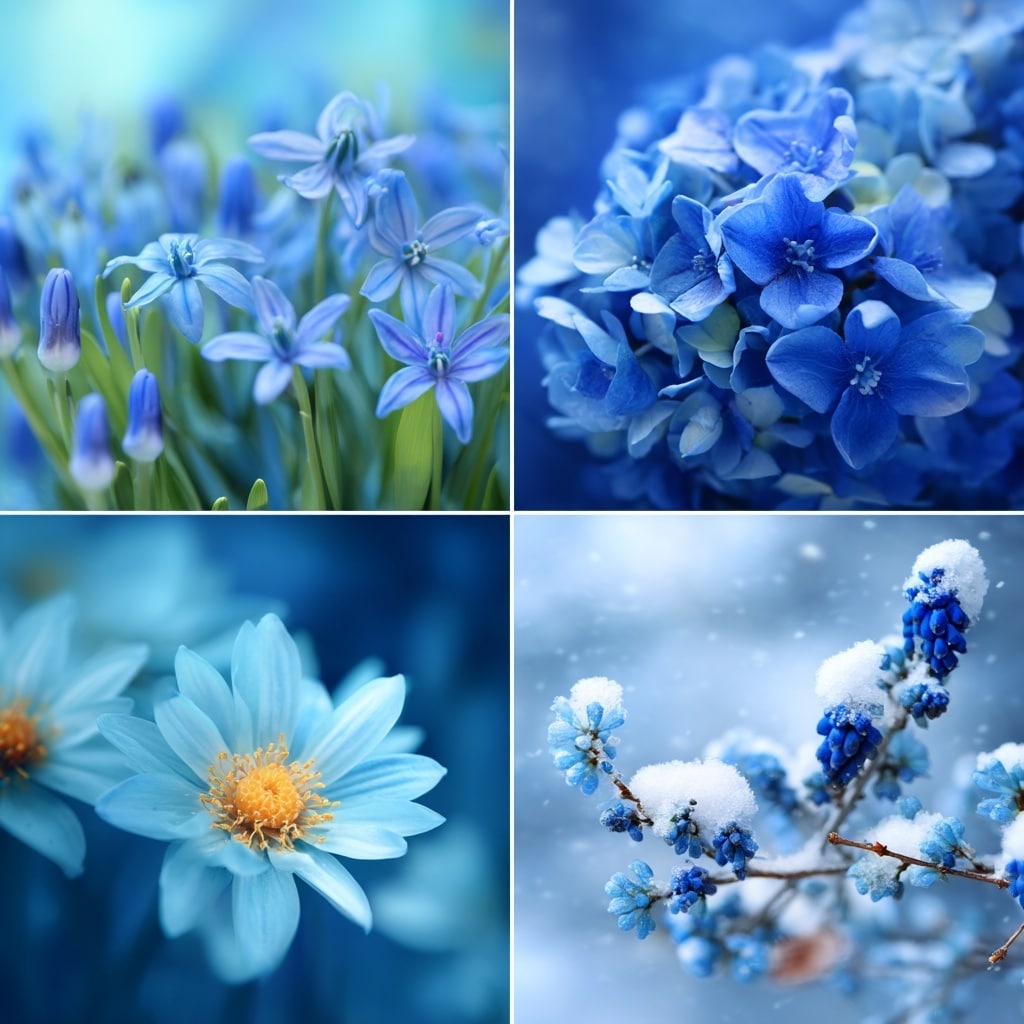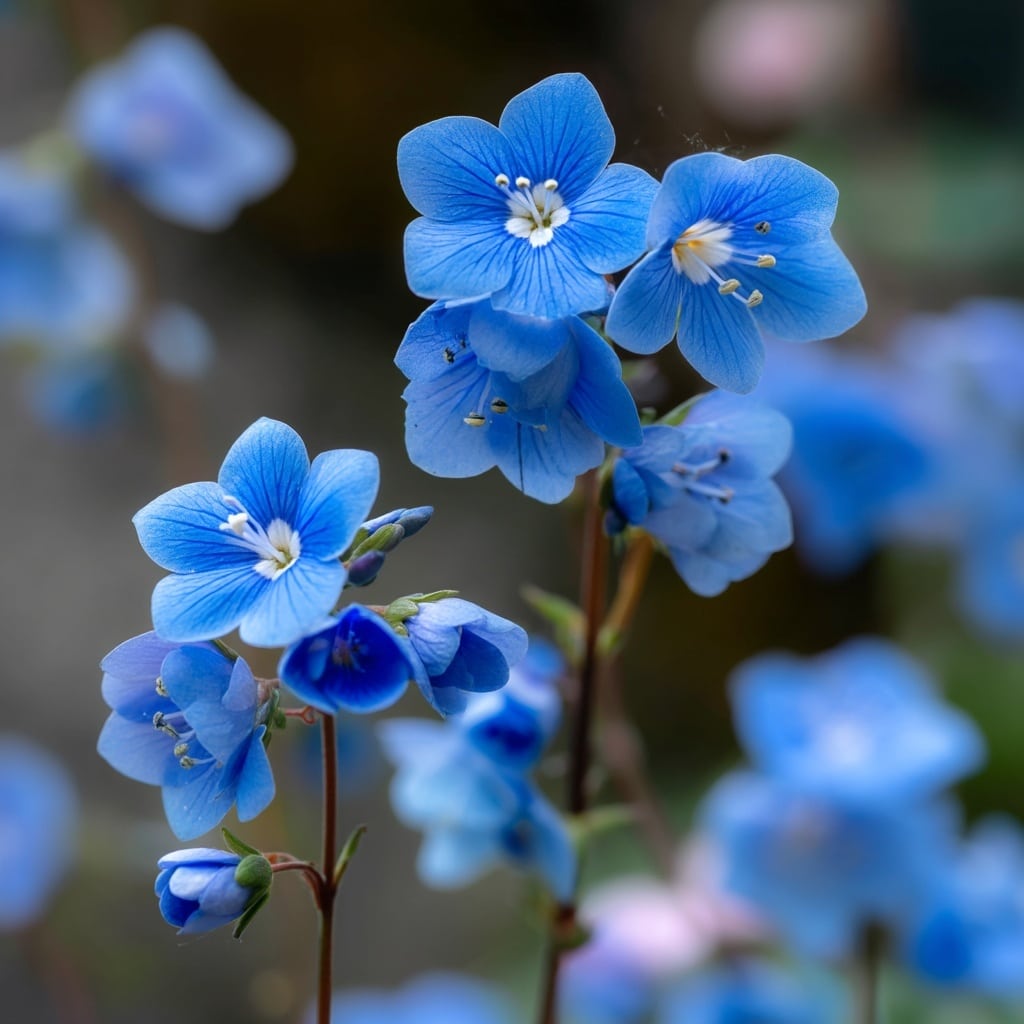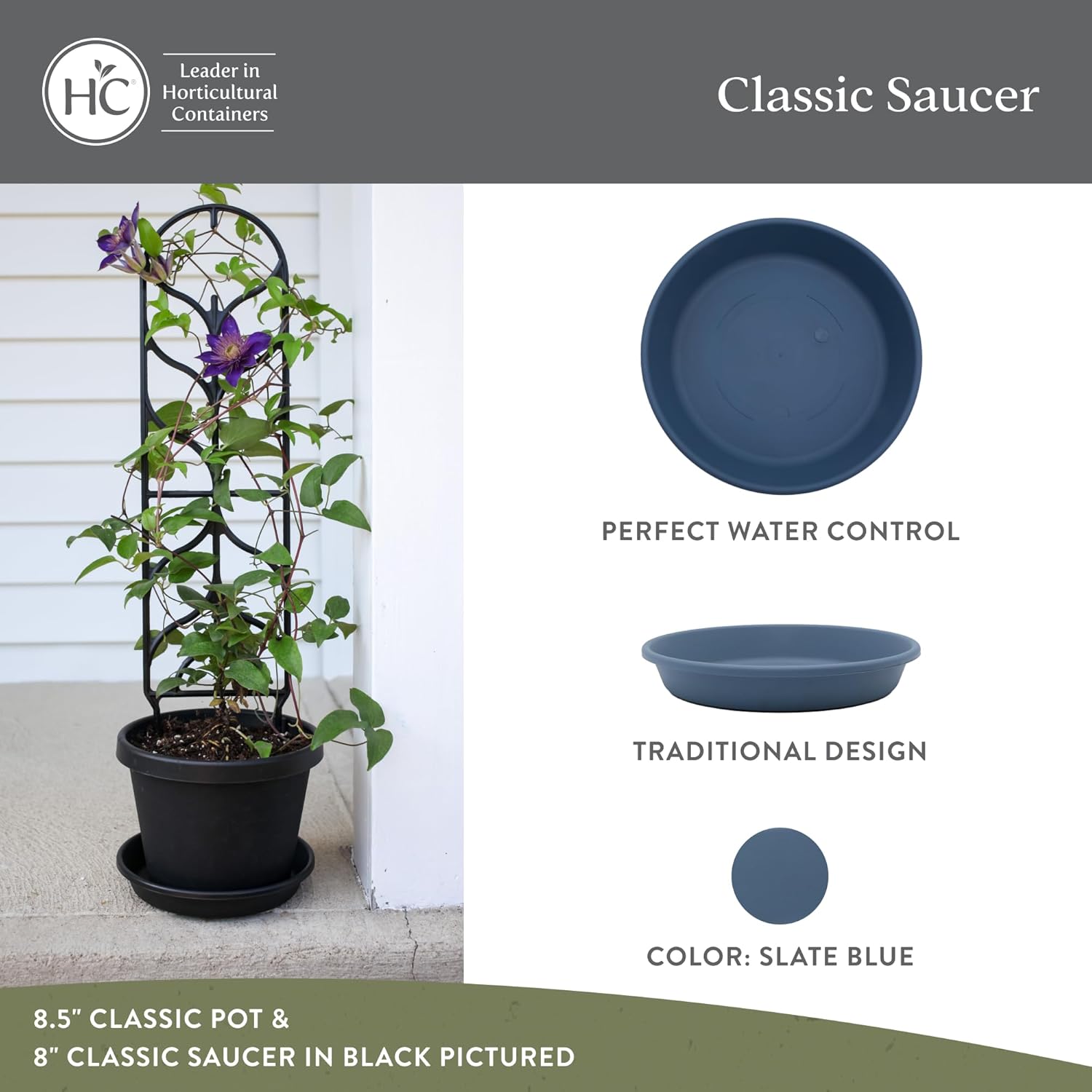Blue flowers bring a sense of calm, elegance, and quiet beauty to any garden or bouquet. While they may be less common than other floral colors, their unique shades—from pale sky tones to deep indigos—offer something truly special for gardeners and flower lovers alike. Whether you’re designing a serene garden space or adding a soothing touch to floral arrangements, blue flowers can elevate the entire experience.
In this guide, we’ll walk you through the most popular types of blue flowers, what they symbolize, when they bloom, and how best to grow or use them. You’ll also discover fascinating facts about why truly blue flowers are so rare—and how some manage to “fake” the color.
Table of Contents
What Do Blue Flowers Mean?
Blue flowers are often associated with tranquility, trust, and healing. Just as the color blue evokes thoughts of open skies and peaceful waters, blue blooms carry similar emotional symbolism. In many cultures, these flowers represent calmness, introspection, and emotional depth, making them a thoughtful choice for times of reflection or recovery.
They’re also commonly linked to loyalty and long-lasting affection. That’s why blue flowers are popular in sympathy arrangements or as heartfelt gifts to close friends and family. In weddings, they hold a special place thanks to the timeless tradition of including “something blue” — a symbol of fidelity and purity.
Whether planted in a quiet corner of your garden or gifted in a bouquet, blue flowers can send a powerful yet gentle message without saying a word.
Blue Flower FAQs & Fun Facts
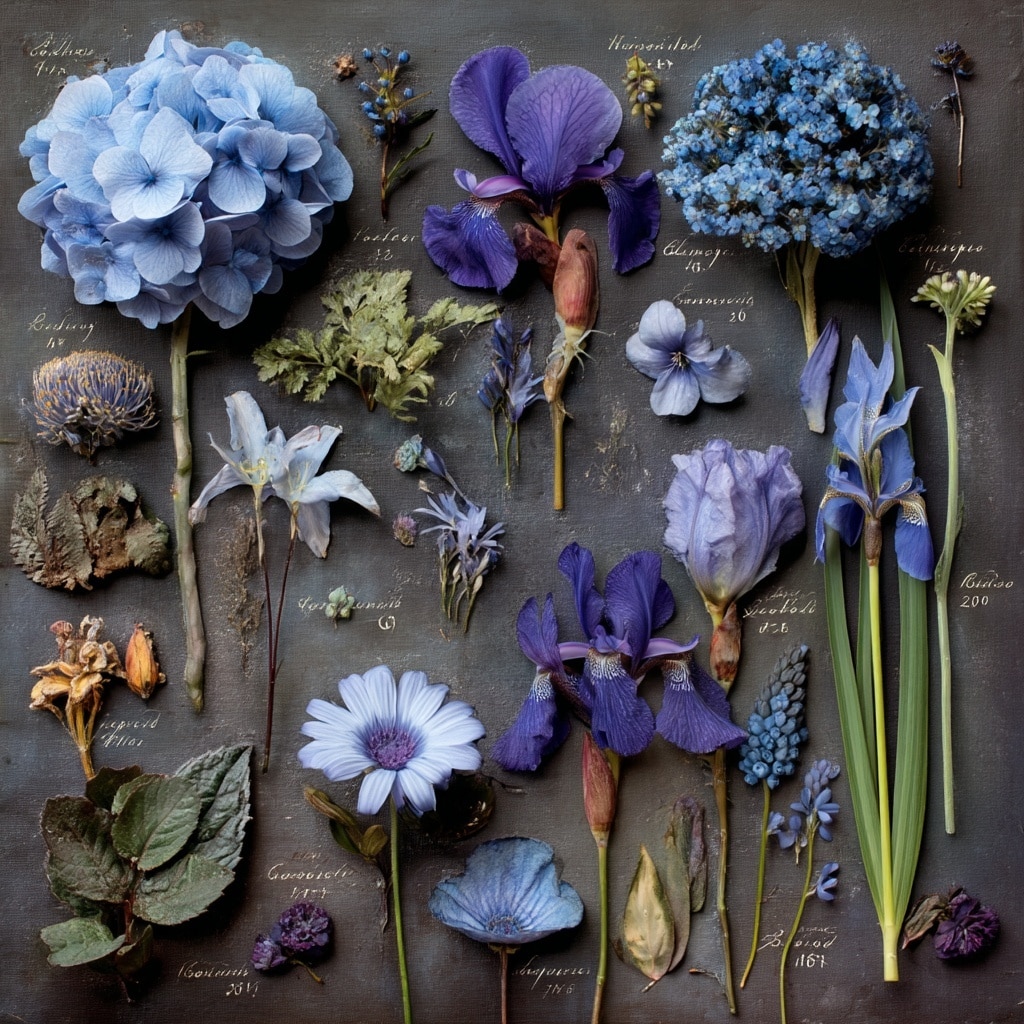
Are there any truly blue flowers?
Surprisingly, blue flowers don’t actually produce a natural blue pigment. What you’re seeing is often a clever manipulation of plant chemistry—flavonoids and pH levels working together to trick the eye. That’s why many so-called blue blooms actually lean toward purple or violet under close inspection. The quest for a “true blue” flower has fascinated botanists for decades, and while selective breeding has come close, most vibrant blues are still created artificially using dyes.
Why do hydrangeas turn blue?
The stunning blue hue of hydrangeas depends on the soil they grow in. Acidic soils (with a low pH) encourage the plant to produce aluminum ions, which result in blue or purplish blooms. Alkaline soil, on the other hand, will give you pink flowers. It’s like a natural pH test kit—right in your garden!
Did you know the UK is home to over half the world’s bluebells?
Yes, that’s right. More than 50% of global bluebell populations grow wild in British woodlands. These early spring flowers create breathtaking carpets of blue and are legally protected due to their rarity and ecological value.
When Do Blue Flowers Bloom?
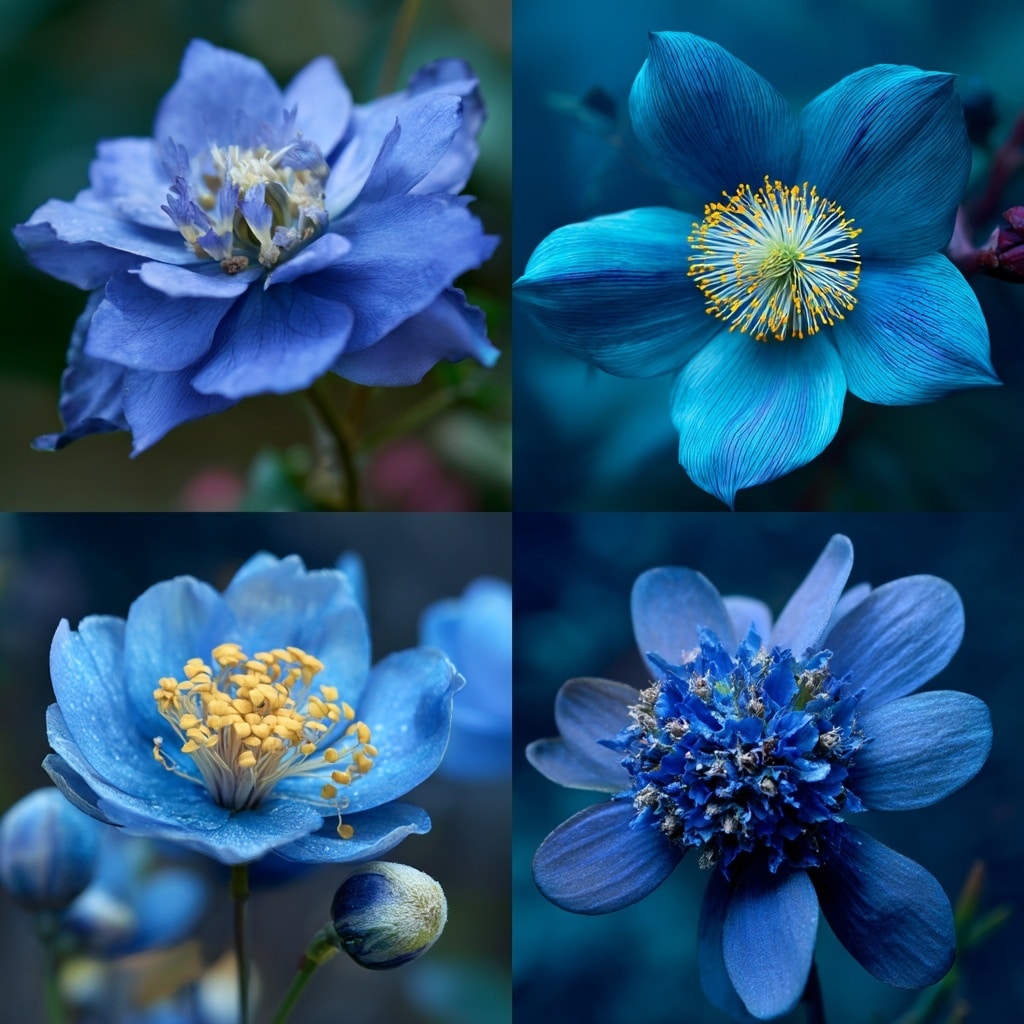
Blue flowers bloom across all four seasons, depending on the variety. Whether you’re planting a vibrant spring garden or looking for winter-friendly blooms, there’s a blue flower to suit every time of year. Here’s a seasonal breakdown to help you plan your planting or floral arrangements.
Spring Blue Flowers
Spring offers an abundance of blue blooms. This is the perfect time to add soft, refreshing color to your garden.
- Hyacinths – Sweet-scented and compact, perfect for borders and pots
- Grape Hyacinths (Muscari) – Tiny blue clusters that naturalize easily
- Forget-me-nots – Delicate and charming with bright sky-blue petals
- Irises – Tall, striking blooms that return year after year
- Wild Blue Phlox – Ground-covering with star-like flowers
- African Lily (Agapanthus) – Early-season varieties begin to appear
Summer Blue Flowers
Summer gardens burst with bold and dramatic blues.
- Hydrangeas – Classic blue when grown in acidic soil
- Delphiniums – Towering spikes that add vertical drama
- Sea Holly (Eryngium) – Spiky, metallic-blue texture
- Gentians – Deep cobalt color with a trumpet shape
- Wild Blue Indigo – Blue-green foliage and spires of blooms
- Allium – Round clusters of tiny, star-shaped flowers
Autumn & ❄️ Winter Blue Flowers
As temperatures drop, blue flowers become less common but not impossible to find.
- Asters – Dainty blue daisies that bloom late into fall
- Bog Sage – Vibrant blooms that contrast nicely with autumn tones
- Late Irises – Some iris varieties emerge in late winter
- Sea Holly – Holds color and texture even through frost
Types of Blue Flowers (With Tips & Fun Facts)
Below are some of the most beloved blue flowers, complete with gardening insights, seasonal info, and little-known facts. Whether you’re designing a cottage garden or arranging a vase, these blooms bring both beauty and meaning.
Anemone (Windflower)

- Season: Spring
- Look: Five-petaled, saucer-shaped blooms in soft blue hues
- Fun Fact: The name comes from the Greek word for “wind,” as the petals seem to open with a breeze
- Gardening Tip: Cut stems at an angle and place in cool water to extend vase life
Bluebell (Hyacinthoides non-scripta)
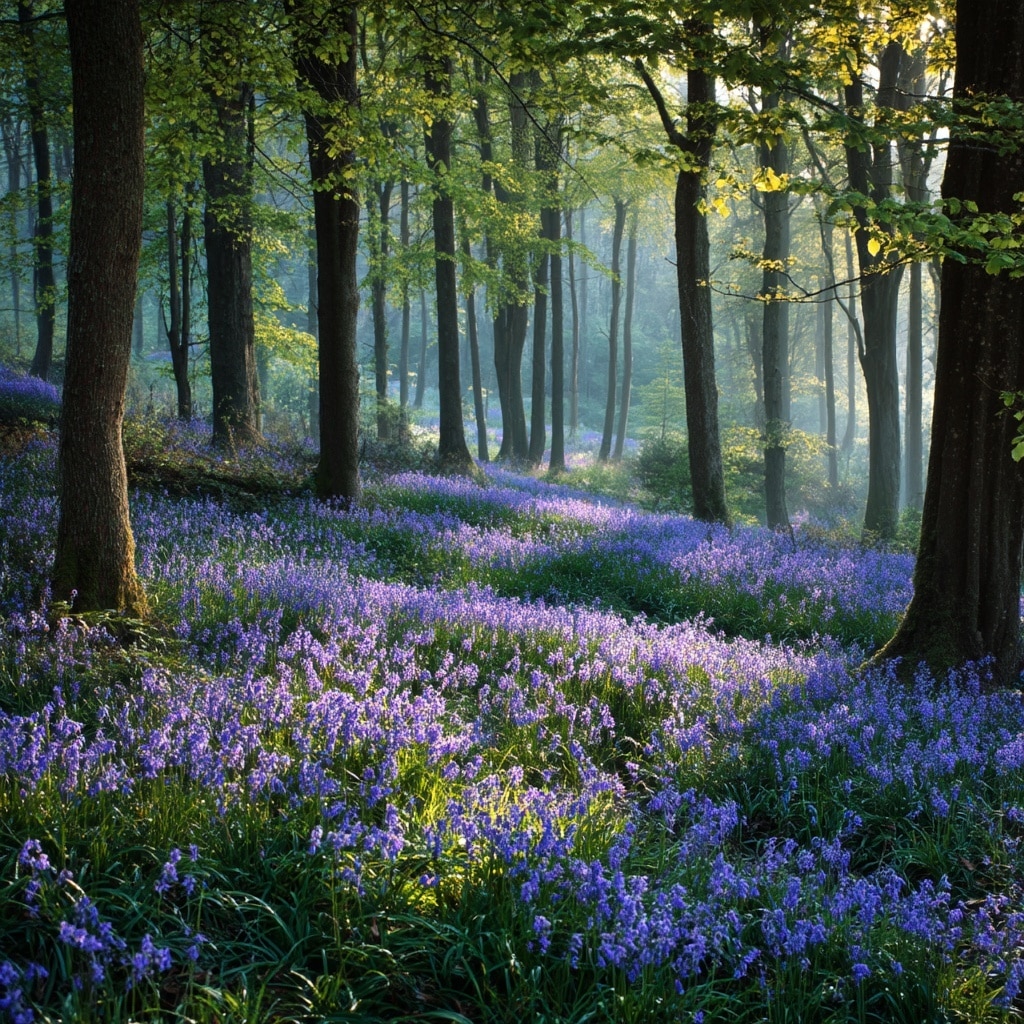
- Season: Spring
- Look: Delicate, nodding blue-violet bells in woodland clusters
- Fun Fact: Over half of the world’s wild bluebells grow in the UK
- Gardening Tip: These are best left untouched—bluebells don’t last in vases and are better as native garden plants
Eryngium (Sea Holly)
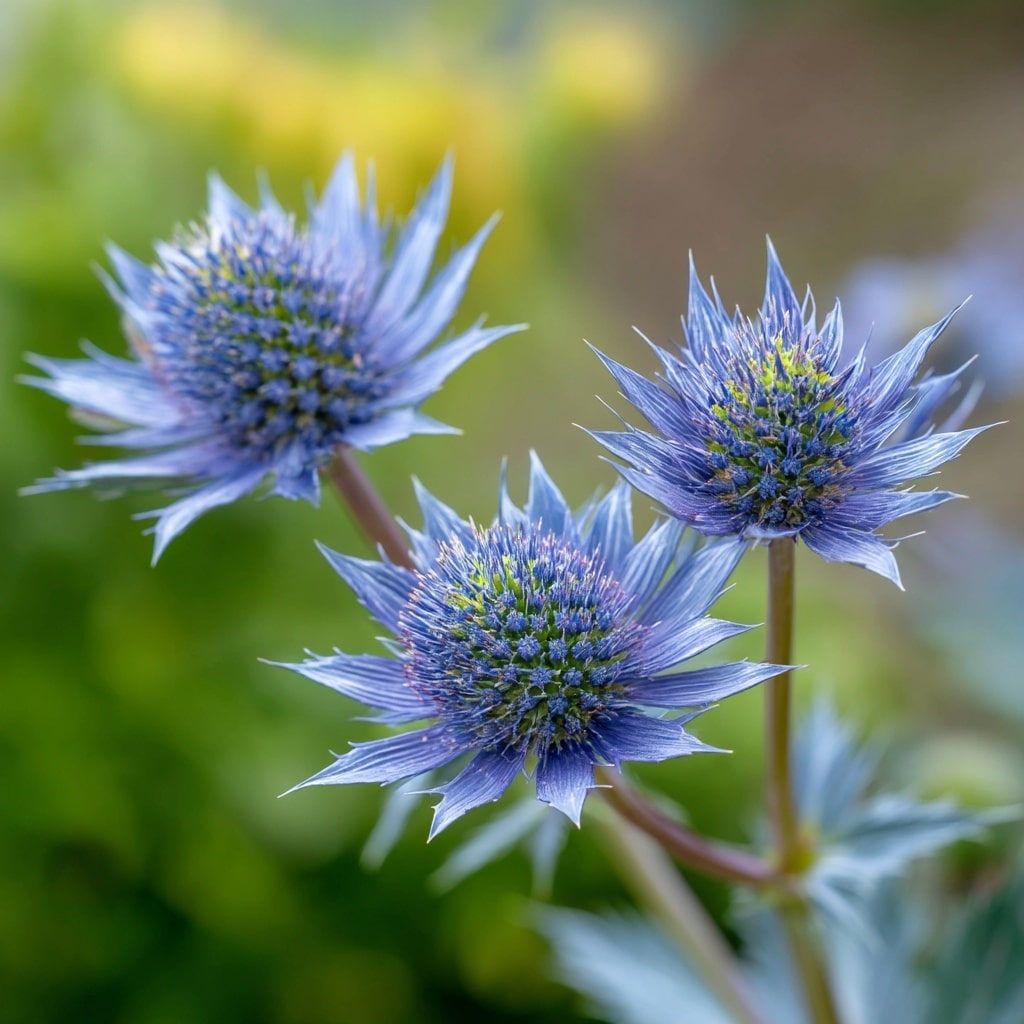
- Season: Summer
- Look: Spiny, thistle-like heads in metallic blue
- Fun Fact: Shakespeare mentioned sea holly as a symbol of love
- Gardening Tip: Excellent for winter bouquets and drying for texture
Hyacinth (Hyacinthus)

- Season: Spring
- Look: Urn-shaped, densely packed blooms with intense fragrance
- Fun Fact: They’re related to asparagus!
- Gardening Tip: Gift as bulbs in pots for longer enjoyment indoors
Forget-me-not (Myosotis)
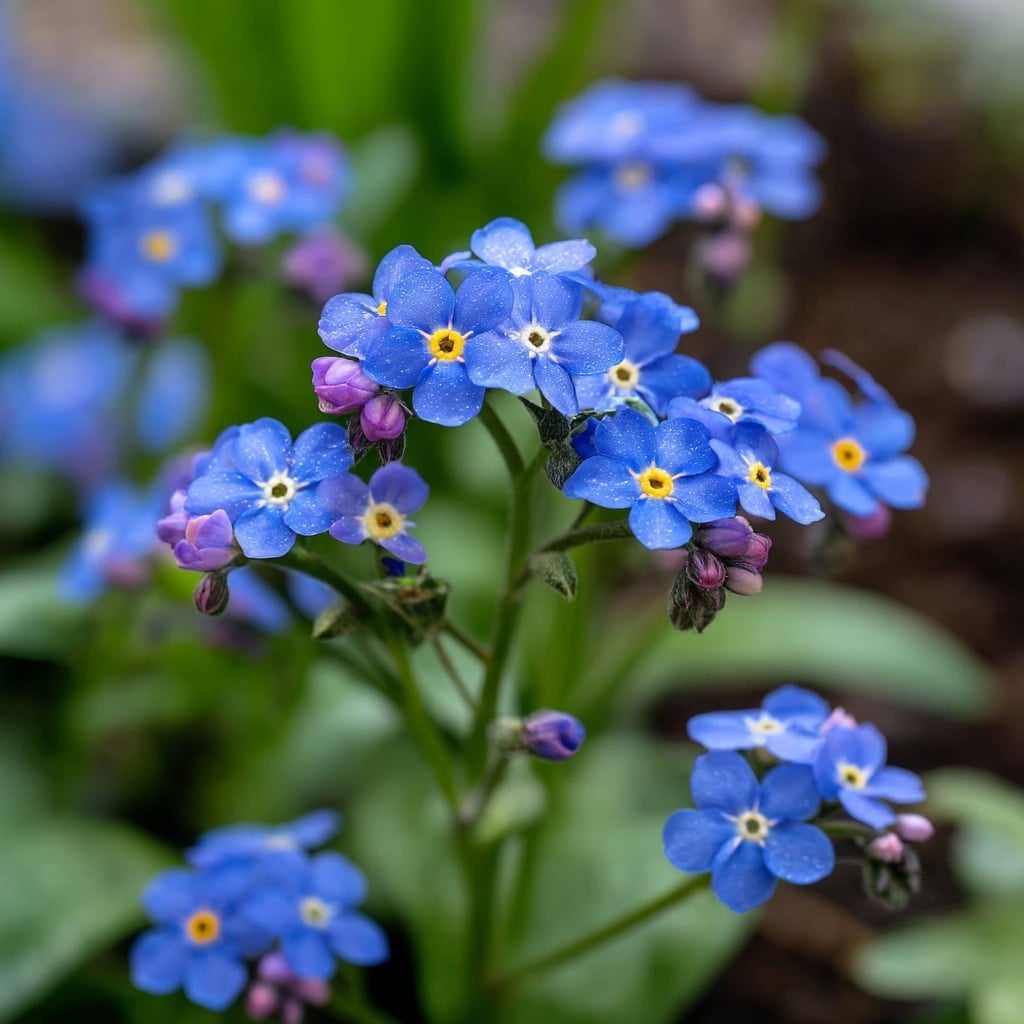
- Season: Spring & early summer
- Look: Tiny, bright blue clusters on delicate stems
- Fun Fact: Once called “scorpion grass” for the curl of its stem
- Gardening Tip: Adds a romantic, airy touch to bouquets or borders
Balloon Flower (Platycodon grandiflorus)
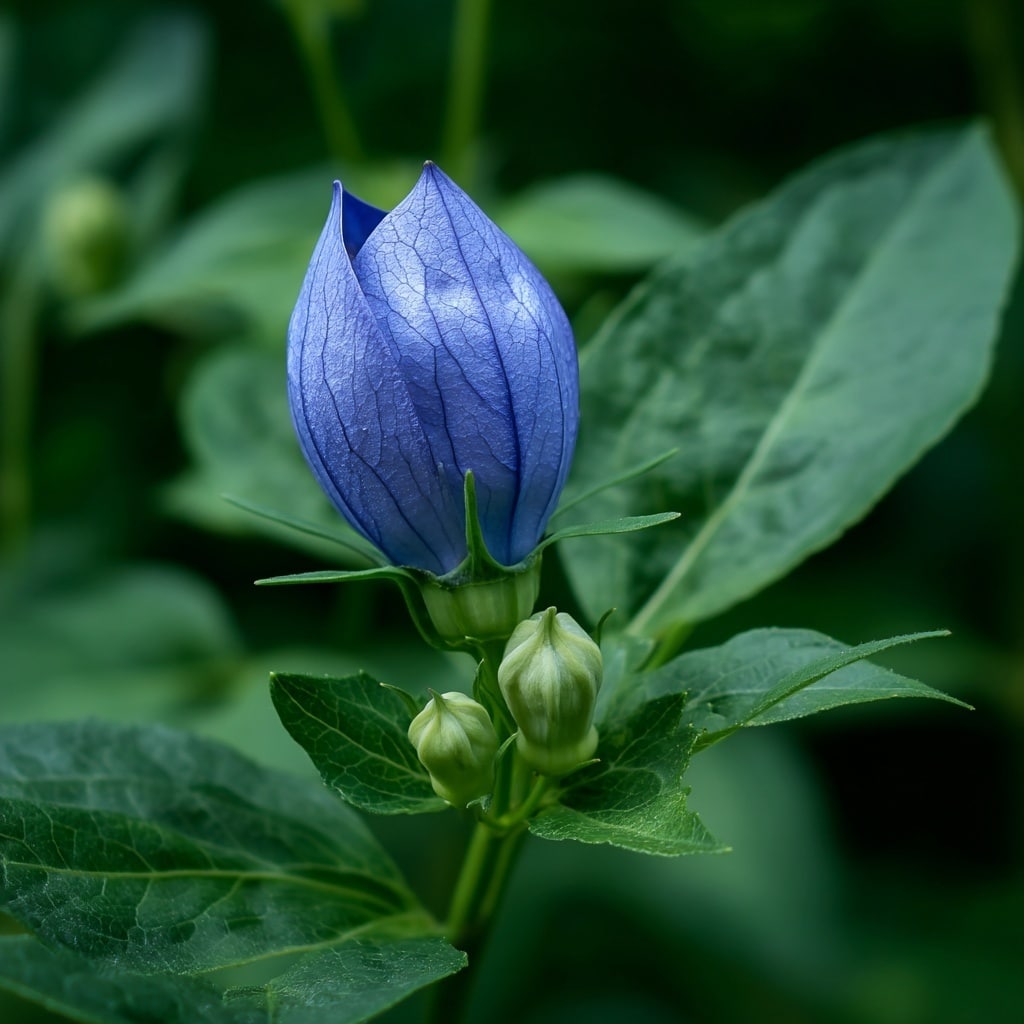
- Season: Summer
- Look: Buds swell like balloons before opening into star-shaped flowers
- Fun Fact: The “pop” of the opening bud is a favorite among children
- Gardening Tip: Change water daily to prevent its milky sap from clouding the vase
Allium (Flowering Onion)
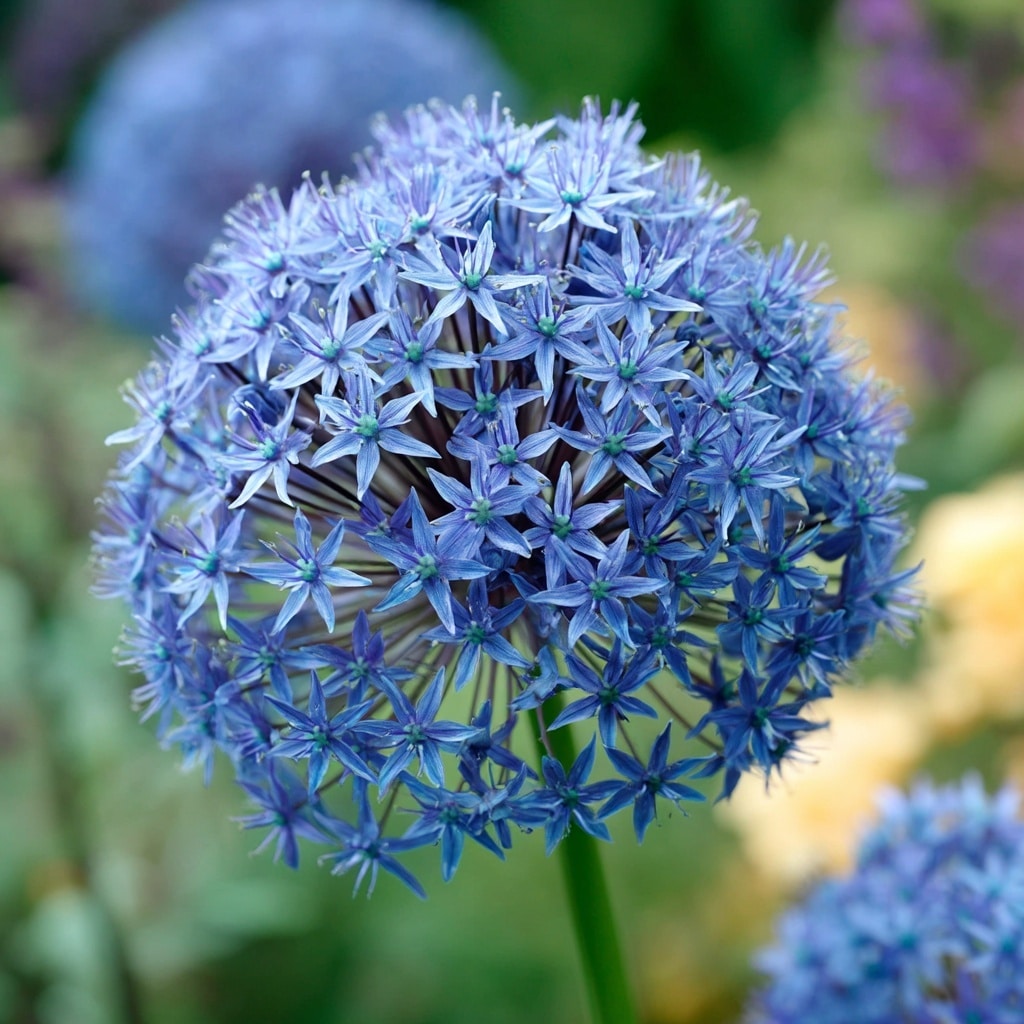
- Season: Summer to early autumn
- Look: Globe-shaped clusters of small, starry flowers
- Fun Fact: Some varieties can grow flower heads up to 15 cm wide
- Gardening Tip: Use dried for bold, sculptural arrangements
Agapanthus (African Lily)
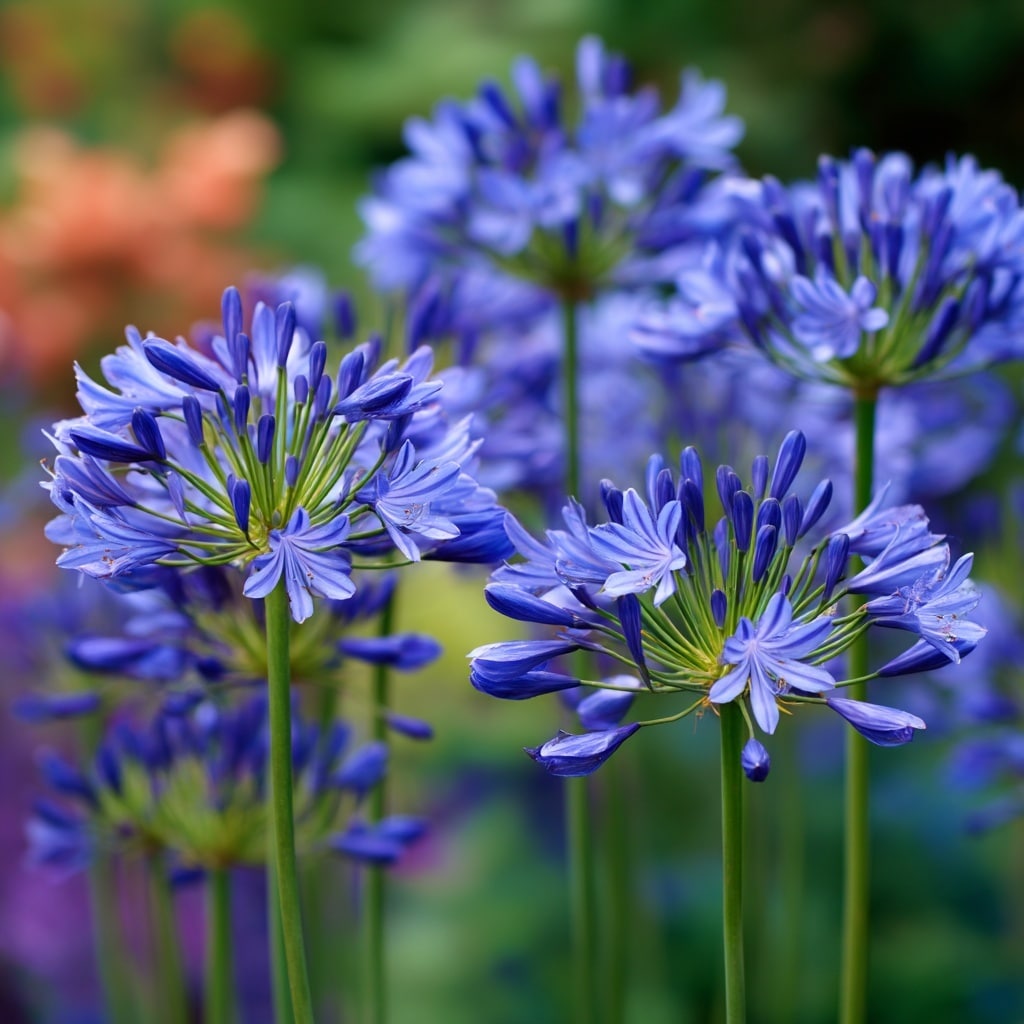
- Season: Late spring to summer
- Look: Tall stalks topped with trumpet-like, sky-blue blooms
- Fun Fact: Native to South America, despite its common name
- Gardening Tip: Perfect filler for floral arrangements needing volume
Campanula (Canterbury Bells)

- Season: Late spring
- Look: Bell-shaped blossoms in soft lavender-blue
- Fun Fact: Traditionally gifted to symbolize gratitude
- Gardening Tip: Loves partial shade and well-drained soil
Nigella (Love-in-the-Mist)
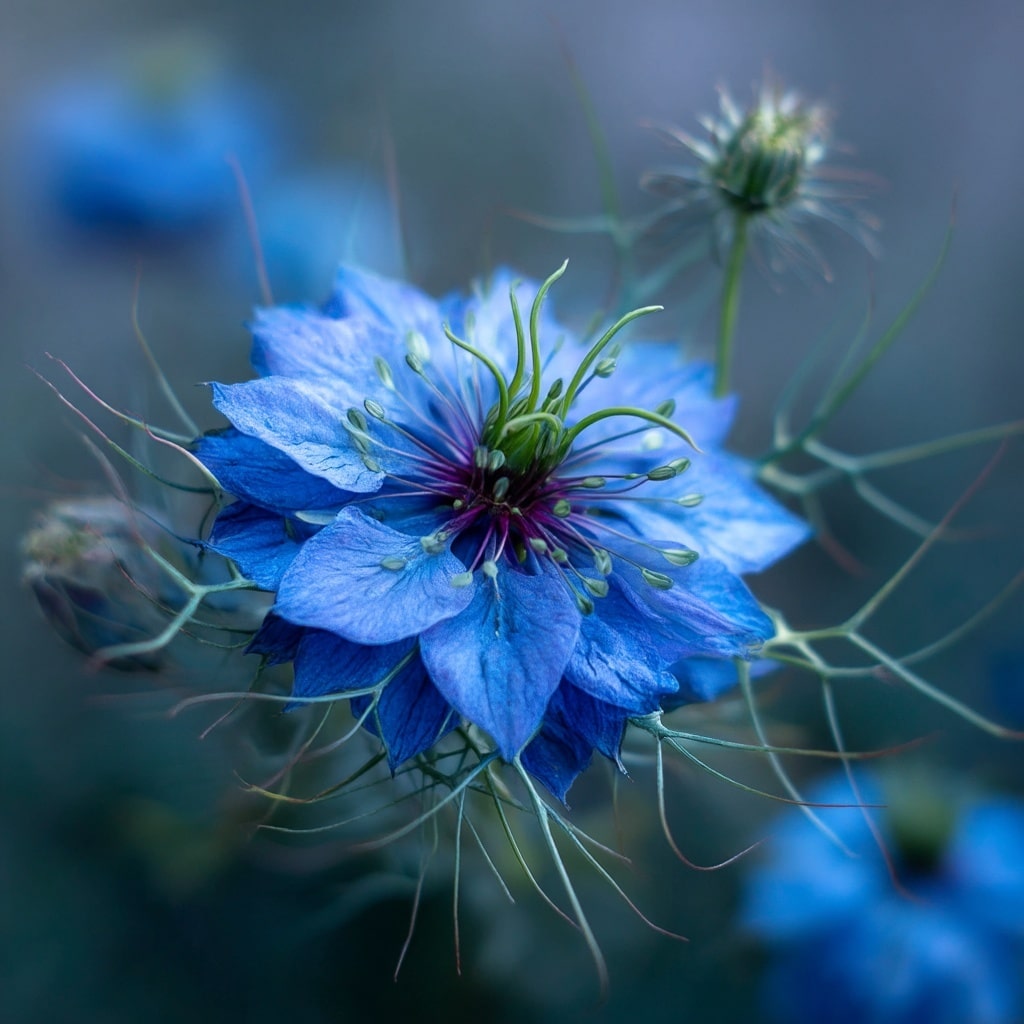
- Season: Spring to early summer
- Look: Pale blue blooms with feathery foliage and unusual seed pods
- Fun Fact: Seeds are used in cooking, especially Indian naan
- Gardening Tip: Use dried pods in arrangements for texture and flavor
Lavender (Lavandula)

- Season: Summer
- Look: Spiky, fragrant blooms in silvery blue tones
- Fun Fact: Ancient Egyptians used lavender during mummification
- Gardening Tip: Dry a bunch and keep it in your bathroom or linen closet
Final Thoughts on Blue Flowers
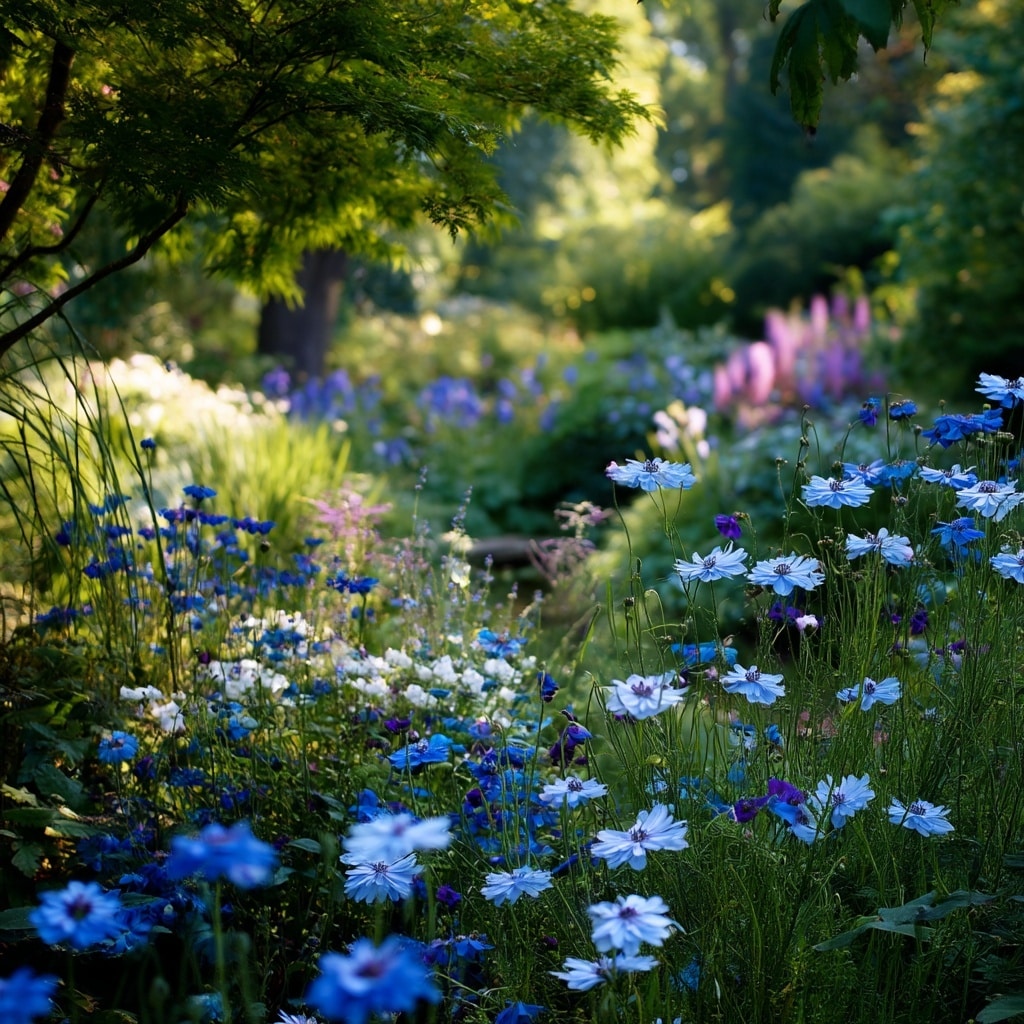
Blue flowers may be rare in the natural world, but that’s exactly what makes them so captivating. From spring’s gentle forget-me-nots to summer’s dramatic hydrangeas, these blooms add calm, elegance, and visual depth to gardens and floral designs alike.
Whether you’re planning a seasonal flower bed, curating a bouquet with meaning, or simply adding a hint of cool-toned charm to your space, there’s a blue flower perfectly suited for the occasion. With proper care and placement, they’ll provide beauty and serenity all season long.

